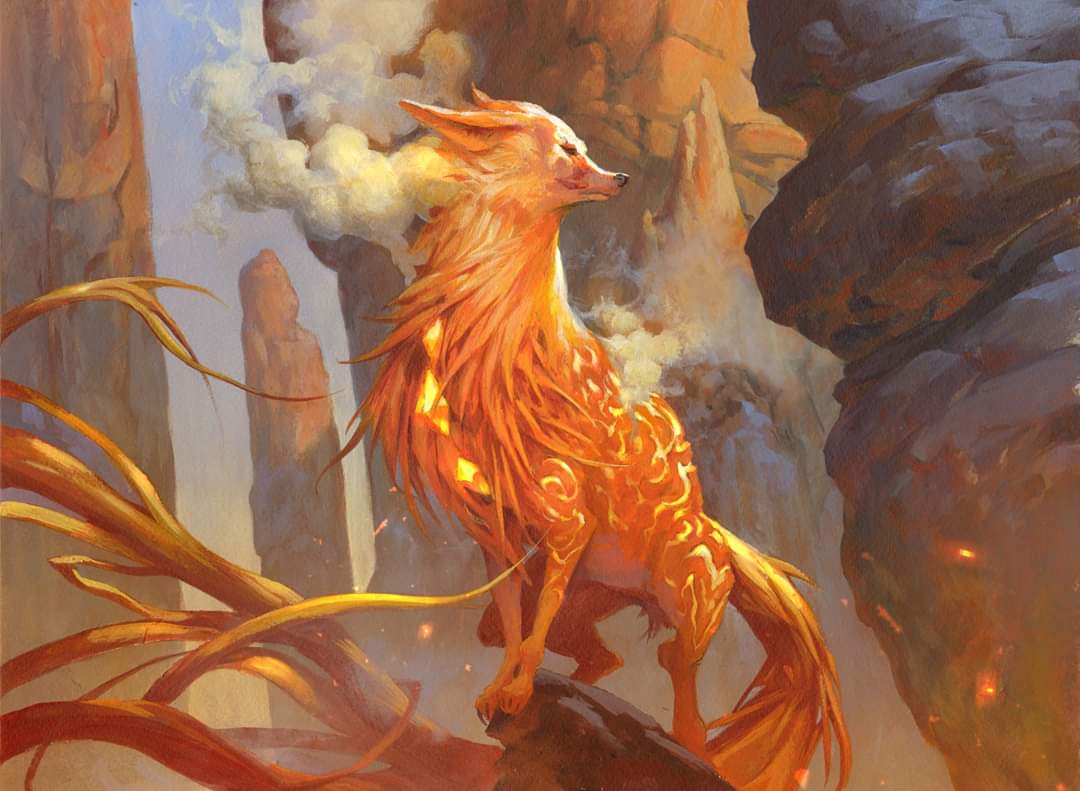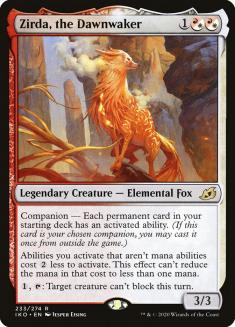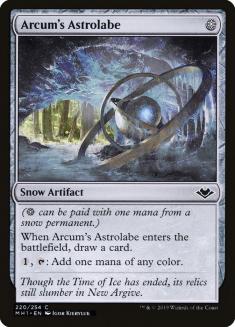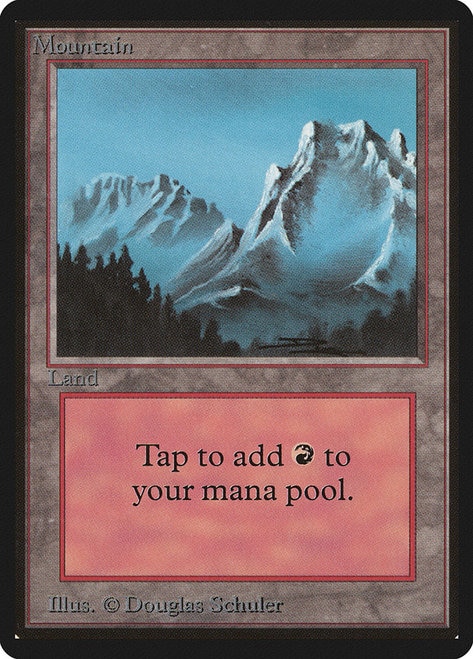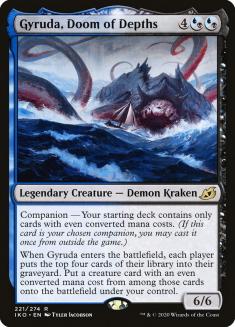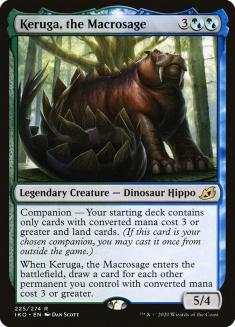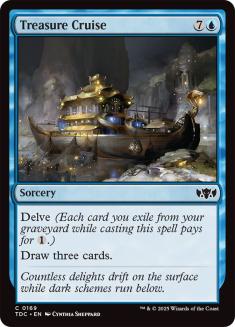Welcome to another edition of Fact or Fiction! Today, Emma Handy, Andrew Elenbogen, and Ryan Overturf are here to give their takes on five statements on the May 18th Banned & Restricted Announcement. Don’t forget to vote for the winner at the end!
1. Banning Lurrus of the Dream-Den in Legacy was a good decision.
Emma Handy: Fact. Lurrus contributed to a strange paradigm in Legacy that wasn’t wholly unfamiliar. It was more or less a single-deck format as a result of Lurrus, but the gameplay was fantastic. Longtime Legacy players loved playing with and against Lurrus online and the games were interesting.
Unfortunately, that isn’t as reasonable when factoring in paper play, as there is a very real cost to acquiring cards in Legacy. We saw with Underworld Breach that this has made Wizards of the Coast (WotC) quick to remove things from the format that they felt would eventually get the axe one way or another, and with Lurrus pushing so much of the rest of the format out, it’s unsurprising to see it go.
Andrew Elenbogen: Fact. Legacy is a format defined by cheap cards. Wasteland hampers the mana development required to cast expensive spells, and Daze and Force of Will trade for expensive spells without investing any mana. As a result, the vast, vast majority of playable Legacy cards cost three mana or less. In such a world, supporting Lurrus is trivial. There is simply very little cost to cutting a few Okos from your deck, and in exchange getting to start every game with an eighth card that is always a powerful three-mana advantage engine.
The card was appearing in a large number of Legacy decks, and had a metagame share large enough to put banning on the table in and of itself. But Lurrus Delver specifically was ridiculously dominant. It was putting up numbers reminiscent of Caw-Blade, with Top 8s regularly being more than half Lurrus Delver. The fact that the Cat Nightmare allowed the deck to play a lower density of threats while having access to card advantage and pressure every single game was simply too much.
Between showing up without cost in half the decks in the format and breaking Delver, Lurrus had to go.
Ryan Overturf: Fact. At this point I think it’s pretty well understood that companions were much more impactful on Constructed Magic than anticipated, and Lurrus has been by far the most impactful companion of the lot. This only gets more true when you look at older formats.
The balancing factor for the eight-card opening hands companions provide is supposed to be the deckbuilding restriction, but Lurrus is asking for very few realistic considerations when you look at Legacy decks. What’s the biggest cut you have to make? True-Name Nemesis? I’ll happily cut a card that’s mostly only good in fair matchups for free card advantage.
In the closing paragraph of today’s announcement Ian Duke stated that they’re keeping the option open to change how companion works. A proper nerf to the mechanic could make Lurrus fine, though barring such a measure this ban looks like the cleanest way to reverse the unintended damage of companions.
2. Banning Zirda, the Dawnwaker in Legacy was a good decision.
Emma Handy: Fiction…ish? If we aren’t at the point of banning all of the companions in every format, then I don’t love the Zirda ban. It seemed to mostly prop up a nonblue combo deck, something which has struggled in Legacy, historically. The printing of Force of Negation last summer made it so the incredibly explosive combo decks a la Belcher were harder to justify, and Zirda was a great way to give the slower combo decks some more resiliency.
So, while I think that companions in their current iteration would inevitably see seven or so banned cards, it is strange to me to see Zirda bite the dust before Gyruda, based on gameplay alone.
Andrew Elenbogen: Fact. It’s hard to say whether or not Zirda decks would have dominated Legacy as they were mostly overshadowed by Lurrus. However, the play pattern of this card is abysmal. In combination with Grim Monolith or Basalt Monolith, Zirda generates infinite mana. Since Zirda decks have access to it every game, this means that these decks only need to find one of eight cards to execute the combo. That is a very high level of consistency and Monoliths were not unplayable prior to this printing. The fact that these decks have incredibly boring, repetitive gameplay is enough for me to be in favor of preempting their dominance. Nobody wants to see their opponent execute the same combo on a very early turn every game.
Ryan Overturf: Fact. Zirda has a much steeper restriction that Lurrus in Legacy, but it also makes infinite mana with Grim Monolith… Once you ban Lurrus, it becomes pretty clear that a lot of decks will be fighting uphill against the Zirda decks. The Zirda shells do some filthy things, and Karn, the Great Creator has been a huge upgrade for these types of strategies as well. A combo deck that plays a solid attrition game off the back of Karn that starts with half of its infinite mana combo in its eight-card hand is very likely too much for the format to bear.
3. Banning Lurrus of the Dream-Den in Vintage was a good decision.
Emma Handy: Fiction. Let new cards dominate a format like Vintage.
Ain’t nobody complaining when every deck features Black Lotus and company. The ubiquity of Lurrus is certainly a problem, but the spirit of Vintage is generally that it’s an everything-goes, no-holds-barred deathmatch between the most powerful things in Magic’s history. If it turns out that a new card that breaks with Black Lotus is now the best thing to be doing, then that’s what happens. It is certainly awkward that the companion mechanic makes restricting a nonexistent drawback, but with the allusion to possible companion errata, I would’ve liked to see Lurrus just shape Vintage for a bit longer.
Andrew Elenbogen: Fact. For most of Vintage’s history, the format was divided into four major archetypes: blue control decks, Mishra’s Workshop decks, blue combo decks, and Dredge. Lurrus immediately became omnipresent throughout blue control decks without much cost. It forced each combo deck to either find a way to play it or cease to exist in the format. That meant that classic Vintage favorites like Oath of Druids became far less appealing overnight. Mishra’s Workshops were similarly compressed, with the Ensnaring Bridge lock versions being quickly subsumed by the Arcbound Ravager lists solely because of Lurrus.
Dredge is still playable, but was hurt substantially since Lurrus allows opponents to use Tormod’s Crypt every single turn of the game. This approach dodges Force of Negation and Force of Vigor, making it difficult for Dregde to answer. That means that of Vintage’s four major archetypes, three of them warped until they could play Lurrus, and the fourth became drastically worse. That’s not to mention the fact that the card makes Black Lotus games even more lopsided, which is not something anyone wanted.
Good riddance.
Ryan Overturf: Fact. Okay, so take everything I said about Lurrus in Legacy with regard to eight-card hands and minimal deckbuilding costs but then also put Black Lotus in your deck. I’m one of the bigger proponents of companion gameplay when it comes to Modern and Pioneer, but I’ve seen close to universal disgust at Lurrus in Vintage and I don’t really have a good argument why all seven Vintage players should continue to be subjected to Lurrus. Outright bans are an extremely rare occurrence in Vintage, but it’s the cleanest answer.
4. Arcum’s Astrolabe should have been banned in Legacy in today’s B&R announcement.
Emma Handy: Fact. My favorite Legacy bans are the ones that raze the earth, and seeing Astrolabe go with Lurrus and Zirda would’ve done a great job of knocking a ton of players back to the drawing board. Astrolabe allowing so many four- and five-color control decks to operate on a pile of basic lands is kinda miserable, when Wasteland is meant to be a check for decks that are greedy on that level. It simply removes a paradigm from the format in a way that feels hamfisted.
Oh, it also more or less bans non-snow basics, and picking out basics is one of the most fun parts of old-school deckbuilding.
Get it out of here.
Andrew Elenbogen: Fiction. I don’t think Acrum’s Astrolabe is particularly good for Magic but that doesn’t mean it should be banned. I think that Magic is better when in order to ban a card, dominance must be demonstrated. Since Ikoria: Lair of Behemoths was released, Arcum’s Astrolabe’s decks have not looked dominant. Even without Lurrus or Zidra, I doubt that will change. Several of the other companions will continue to influence the format, and they don’t necessarily mesh particularly well with Astrolabe.
Moreover, I don’t think these decks were winning tournaments left and right prior to Ikoria. They were a fine choice, but not noticeably better than several other Tier 1 options. If half of Top 8s start to contain Arcum’s Astrolabe, then we can talk about removing it. For now, I think we just have to live with the fact that Snow-Covered Island is better than basic Island.
Ryan Overturf: Fact. I don’t have a horse in this race as I don’t play a ton of Legacy these days and I also consider the popularity of Astrolabe an open invitation to clean house with combo decks, but I do keep up on the discourse and I’m fairly confident in saying that literally nobody likes Arcum’s Astrolabe.
Is Wasteland supposed to be a check on manabase construction or are the five-color decks supposed to sideboard Back to Basics? This is not to say that Wasteland is unimpeachable and should be what Legacy is about, but five-color nonbasic land hate is pretty appalling. Astrolabe is the kind of card that would be cute if it was actually from Ice Age or would make us laugh and ask “What were they thinking?!” if it was in Coldsnap, but the Modern Horizons printing has nobody laughing and nobody knows what they were thinking.
5. Sam Black was right — companion truly is the worst mechanic for the health of Magic since Phyrexian mana.
Emma Handy: Fact. In its current iteration, the available companions don’t present a high enough bar to clear for not only having access to a free card, but in many cases the centerpiece of an archetype. There are certainly knobs that could be turned in order to make the mechanic less egregious — more cards in the vein of Jegantha; fewer like Gyruda and Lurrus.
The mechanic closest to companion in power level in the last eight years or so is delve, which saw most of its cards balanced by having absurdly high costs, like Dead Drop, or being lower-impact, like Rite of Undoing. If anything, Pioneer has shown us that fetchlands were larger offenders than delve, which leads me to agree with Sam’s evaluation of companion.
Andrew Elenbogen: Fiction. Companion is worse for Magic than Phyrexian mana. I think it is the worst mechanic printed since the obscenely broken free spell mechanic seen on cards like Time Spiral. Phyrexian mana fundamentally broke the color pie, but players still had to draw those cards for it to be an issue. Companion impacts almost every game in every format in all of Magic. It makes every game across all of hose formats play similarly. This is the problem presented by cantrips like Ponder and Preordain, but on a much larger scale.
A lot of the fun of Magic is that different games, even games in the same matchup, play out very differently. But companion pushes games to be much more similar to one another. If your opponent is playing a Lurrus deck, you need to hold a removal spell for it. And you need to do that every single game you play against them.
For most of Magic’s history, if you didn’t like a format, you could simply play a different one. This meant that even when Standard was awful, players still enjoyed Magic. Companion obliterates that option. It narrows the decks available to players, coercing them into running a companion and there’s no escaping it. Companion is the largest development mistake in recent memory, and one of the largest threats to competitive Magic as we know it.
Ryan Overturf: Fiction. I’ll start by saying I would completely agree with this if we consider everybody playing with a companion to be a bad thing. The mechanic is incredibly difficult to balance as is in terms of weighing playing with a companion versus not playing with one, to the point where I would consider it not something to bother with.
With that out of the way, I’ve enjoyed a great deal of the companion mirrors I’ve played in Modern and Pioneer. The “companion turn” is an event that’s always on the horizon that creates cool tension and influences game play in a fun way. Knowing that you or your opponent only get one shot at your Lurrus or Yorion heavily informs deckbuilding and gameplay in a way that I have found to be both exploitable and fun.
That said, it is outright embarrassing to be playing non-companion, non-combo decks in these formats. I like the idea of embracing a new form of Magic with more companions for more styles of decks. The gameplay of “both players have a companion” is fun and often very interactive in a way that “both players have Gitaxian Probe” could never dream of. The gameplay of “one player has a companion” is mostly just miserable the way the mechanic currently works. Given that many players dislike companions and we’re already seeing bans, I can’t imagine that we’re ever going to move towards formats with more companions enabling more decks, which means the mechanic will become more and more miserable to have around over time.

